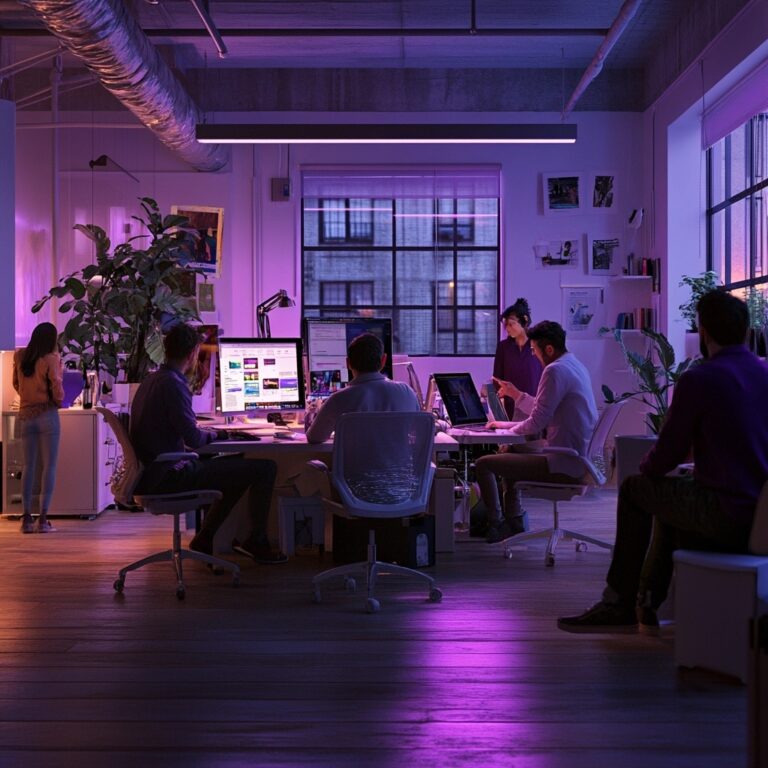Where to Get Web Design Inspiration from the Most Uncommon of Places

Web design can become a cookie-cutter industry at times, as I’m sure most of you have seen the same elements of a website or app in different places. Whether it’s a hamburger menu or a hero image with centered text content, elements like these are ubiquitous and very-much noticeable, especially for someone like me who’s looking at websites all day everyday. With that said, it’s important for a website to stand out in the seemingly vast and endless sea of websites on the internet. So how do you come up with something fresh and unique when your creative juices aren’t flowing?
To my fellow designers, I understand your pain. We’ve all been there. Sitting in your ergonomic desk chair, blank stare on your face, looking up at the ceiling and having a borderline existential crisis as you contemplate on how to design the menu structure for an e-commerce site that sells fedoras in 2018. Yeah, it can be that bad at times. Finding inspiration for new ideas and interactions can be tough, especially when trying to create something from scratch. But inspiration can come from anywhere – just take a look around and you’ll be surprised at what unexpected source can spark your next idea. Whenever I’m in a creative rut, I try to dig my way out of it by taking inspiration from these unlikely mediums and see how I can incorporate them into my next landing page or website design:
Print Design
Although print and web design are quite different in some respects, there are also some parallels between the two as well. Believe it or not, before computers and technology came into existence, print design was the standard on how to lay out words and images for the consumption of content. The next time you sit in a restaurant, analyze the way their menu has been laid out and organized. While you’re waiting in line at the grocery store and reading the headlines of magazines displayed on the endcaps, observe the colors and fonts used on the cover. Walk down an aisle at your favorite book store (if you can find one nowadays) and figure out what book covers caught your attention and why. Some of the traditional design principles for things like typography or grid systems apply to both print and web design. So the next time you find yourself reading a magazine or book, think about how elements on each page have been laid out and whether or not it can be incorporated into your next site design.
Source: flipsnack
Source: Alfian Brand on Behance
Video Games
With the wide variety of video games out there, there’s also an equal amount for the type of websites you can find. From the toned down and easy to use to the most outrageously experimental. A key aspect to a player’s experience when playing a game is based on the game’s interface design. A game’s interface could be the difference maker from having an enjoyable time playing a game to being outright frustrated.
The next time you play your favorite video game, ask yourself a few questions: Is it easy for me to go in and start playing? Is it easy to find the information I’m looking for? Is there any wasted space on the screen? Are there any tedious steps or tasks that can be consolidated or eliminated? You may not even realize it while playing, but these are all questions that affect your impression of the game. And when it comes to web design, these are also the same questions when thinking about the user experience of your next design.
Source: Super Smash Bros. Ultimate via Attack of the Fanboy
Source: Skyrim via Game Designing
Source: Spiderman (PS4) via Heavy
Architecture
From the blocky and robust look of brutalism to the fluid shapes of structures designed by Zaha Hadid Architects, these same elemental features can be incorporated into modern web design. Hadid’s sleek designs emphasized organic shapes and abstract structures. Her buildings are well-known for their curved and futuristic exteriors. Any of Hadid’s renowned work are excellent sources of inspiration for any designer.
Source: Guangzhou Opera House by Zaha Hadid Architects
Source: Archinect / Pawel Biernacki
Source: Geisel Library / GQ / Erik Jepsen
Architects and engineers determine the overall functionality and aesthetic of a building. This is also something designers should take into consideration when a user is scrolling through a website; what look and feel are you trying to accomplish with your website’s design?
Closing Thoughts
Unfortunately, falling into a creative slump hits us more often than we’d like. We are often told to “think outside the box,” when trying to come up with new and innovative ideas. That cliché saying still stands true, but getting there can sometimes be the hard part. Don’t be afraid to take a look around your environment, you’re bound to draw up inspiration from some unlikely places.
Our Editorial Standards
Reviewed for Accuracy
Every piece is fact-checked for precision.
Up-to-Date Research
We reflect the latest trends and insights.
Credible References
Backed by trusted industry sources.
Actionable & Insight-Driven
Strategic takeaways for real results.














